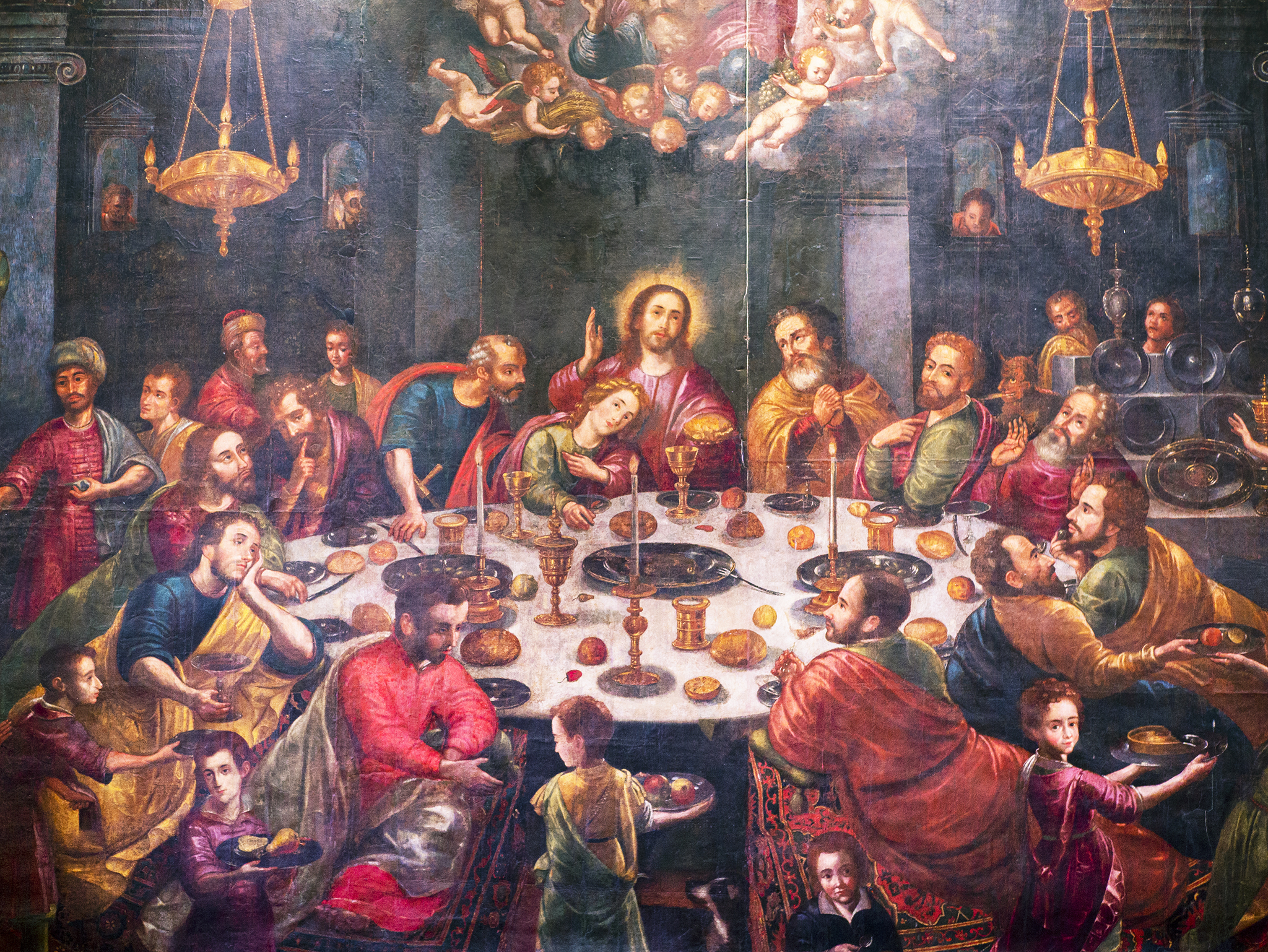When Catholic Spanish colonists arrived in Peru in 1526 and encountered the local Inca people, they thought to themselves – as most colonists do – that their god was the correct one and that everyone else needed to be fixed. For the most part, this was done by brute force and the punishment of those that resisted, but the Spanish also employed more subtle tactics.
For example, the Inca displayed a strong connection to nature, and believed that Pachamama, the earth goddess, was especially linked to the mountains. The Spanish noticed that the locals would often pray on the mountains, and so began placing crucifixes at the summits, tricking the Inca into praying to Jesus.
My favourite instance of the Spanish making slight tweaks to Catholicism in order to entice the Inca is this painting by Diego de la Puente. Located at the Basílica y Convento de San Francisco, it might look like your typical depiction of the Last Supper, but a keen eye will notice a small culinary difference. Rather than the usual banquet of lamb, Jesus and the gang are chowing down on some Guinea Pig – a classic Peruvian specialty.
To this day, many Peruvians maintain spiritual links to both Catholic and Inca traditions, and Guinea Pig can be found in food markets and restaurants across the country.
–
Guinea Pig Last Supper, Basílica y Convento de San Francisco, Lima, Peru


